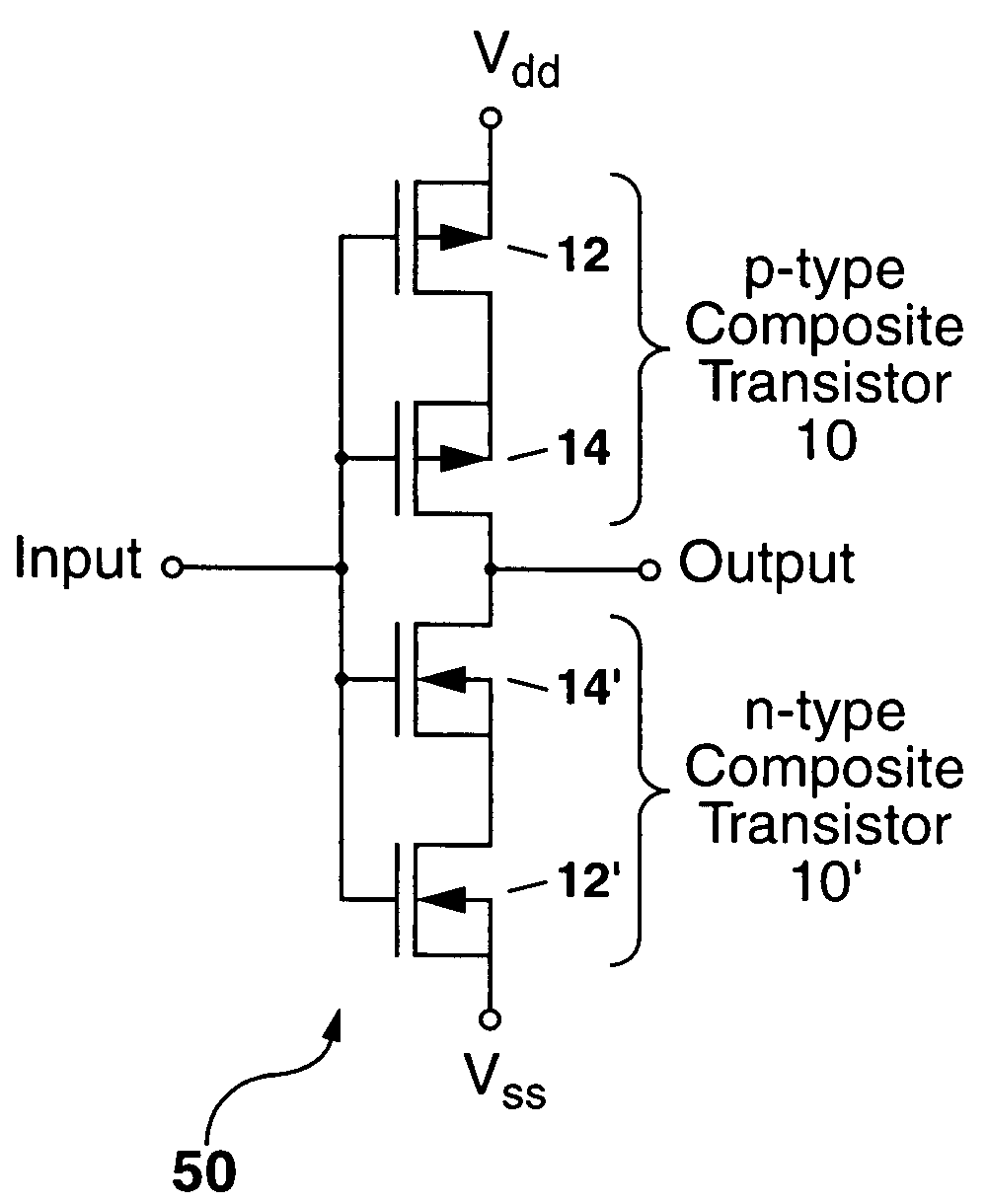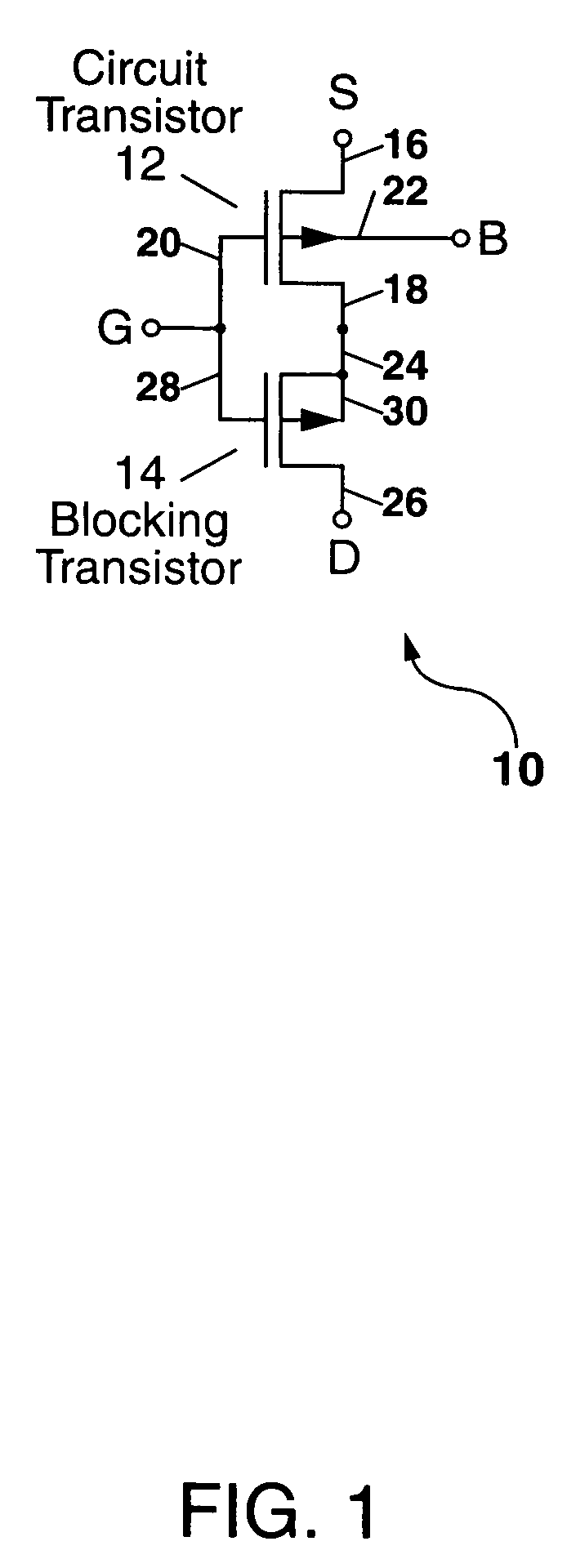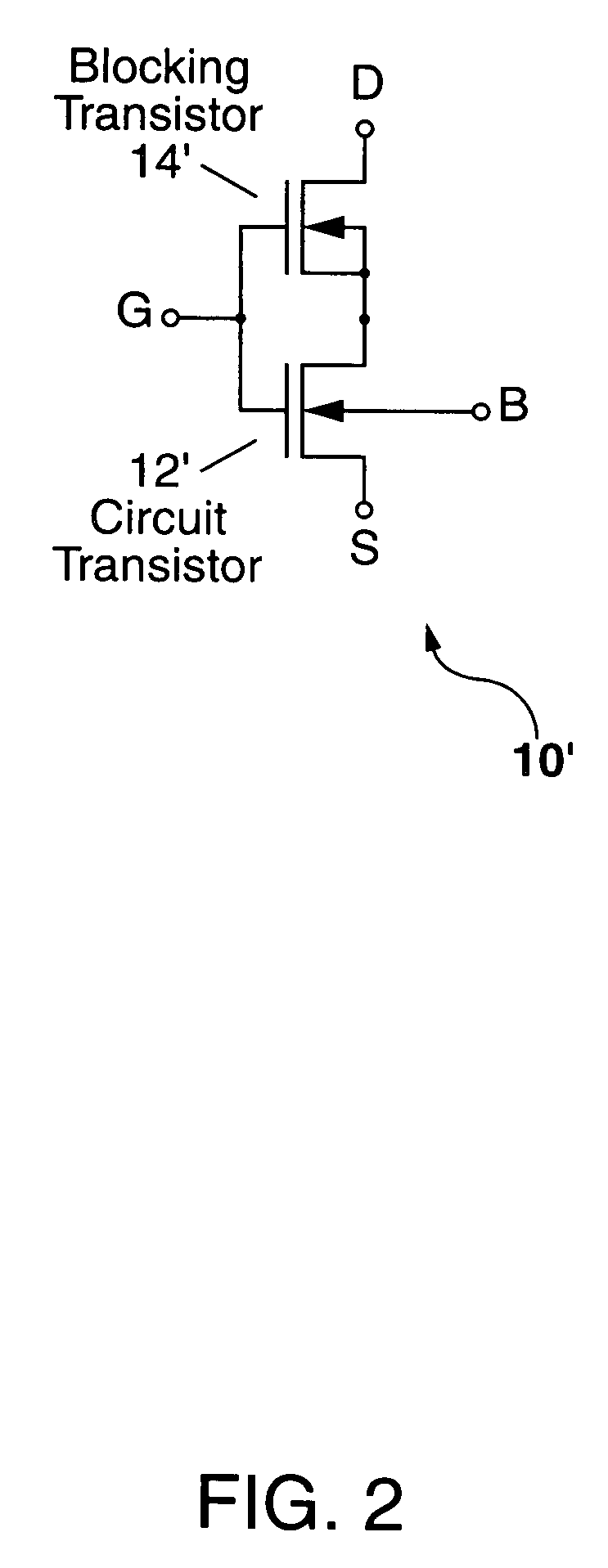Radiation-hardened transistor and integrated circuit
- Summary
- Abstract
- Description
- Claims
- Application Information
AI Technical Summary
Problems solved by technology
Method used
Image
Examples
Embodiment Construction
[0043]Referring to FIG. 1, there is shown a schematic diagram of a radiation-hardened composite transistor 10 of the present invention which can be used to form a radiation-hardened complementary metal-oxide semiconductor (CMOS) integrated circuit (IC). The composite transistor 10 comprises a circuit transistor 12 and a blocking transistor 14 connected together as shown. Each circuit transistor 12 and blocking transistor 14 can be a metal-oxide semiconductor (MOS) transistor. The term “MOS transistor” as used herein is intended to include transistors having gates formed of a metal, a metal alloy, or polycrystalline silicon (also termed polysilicon).
[0044]In the example of FIG. 1, the circuit transistor 12 further comprises a source terminal 16, a drain terminal 18, a gate terminal 20 and a body terminal 22. The blocking transistor comprises another source terminal 24, another drain terminal 26, another gate terminal 28 and another body terminal 30. The gate terminals 20 and 28 are c...
PUM
 Login to View More
Login to View More Abstract
Description
Claims
Application Information
 Login to View More
Login to View More - R&D
- Intellectual Property
- Life Sciences
- Materials
- Tech Scout
- Unparalleled Data Quality
- Higher Quality Content
- 60% Fewer Hallucinations
Browse by: Latest US Patents, China's latest patents, Technical Efficacy Thesaurus, Application Domain, Technology Topic, Popular Technical Reports.
© 2025 PatSnap. All rights reserved.Legal|Privacy policy|Modern Slavery Act Transparency Statement|Sitemap|About US| Contact US: help@patsnap.com



